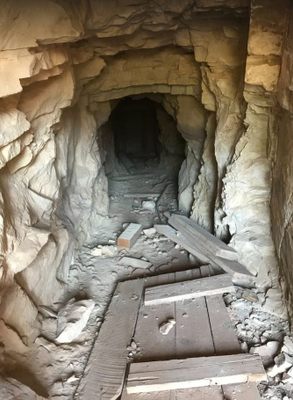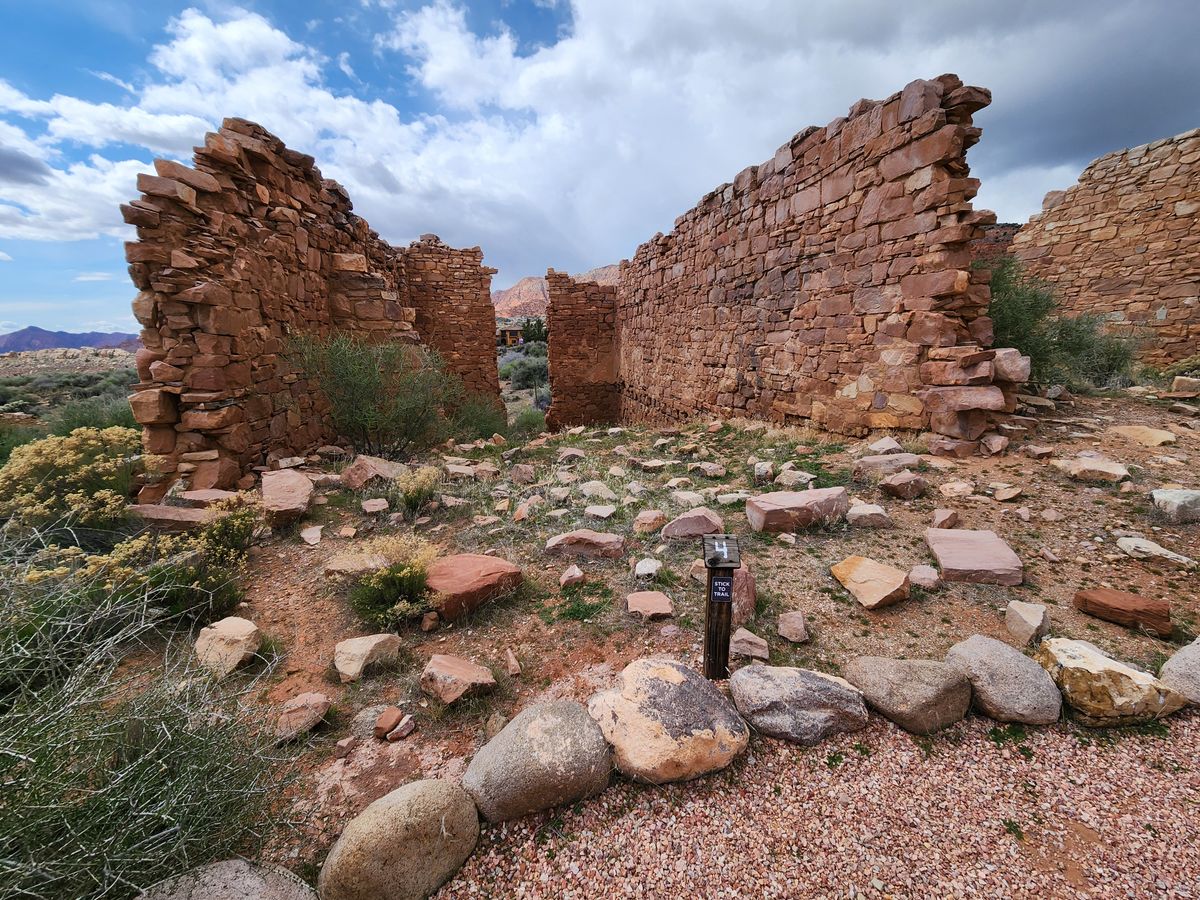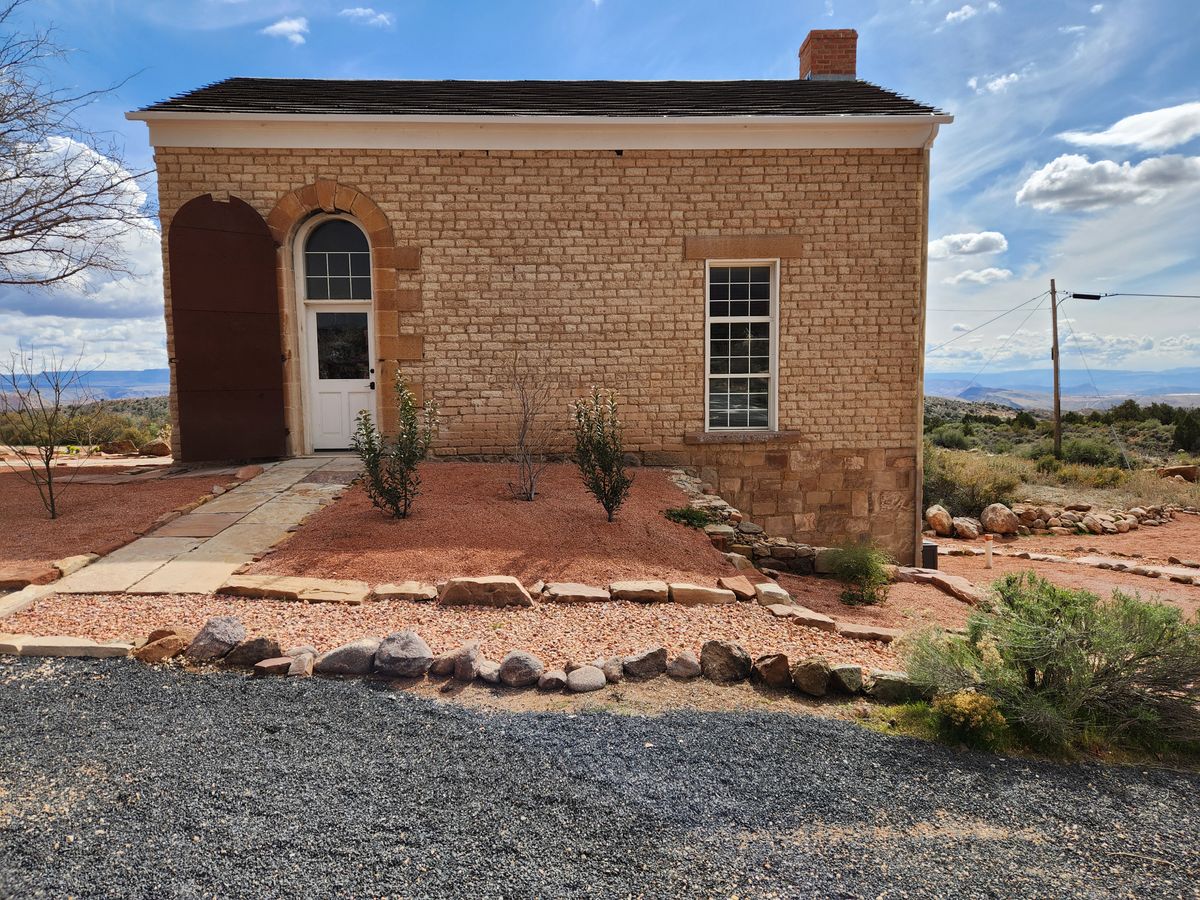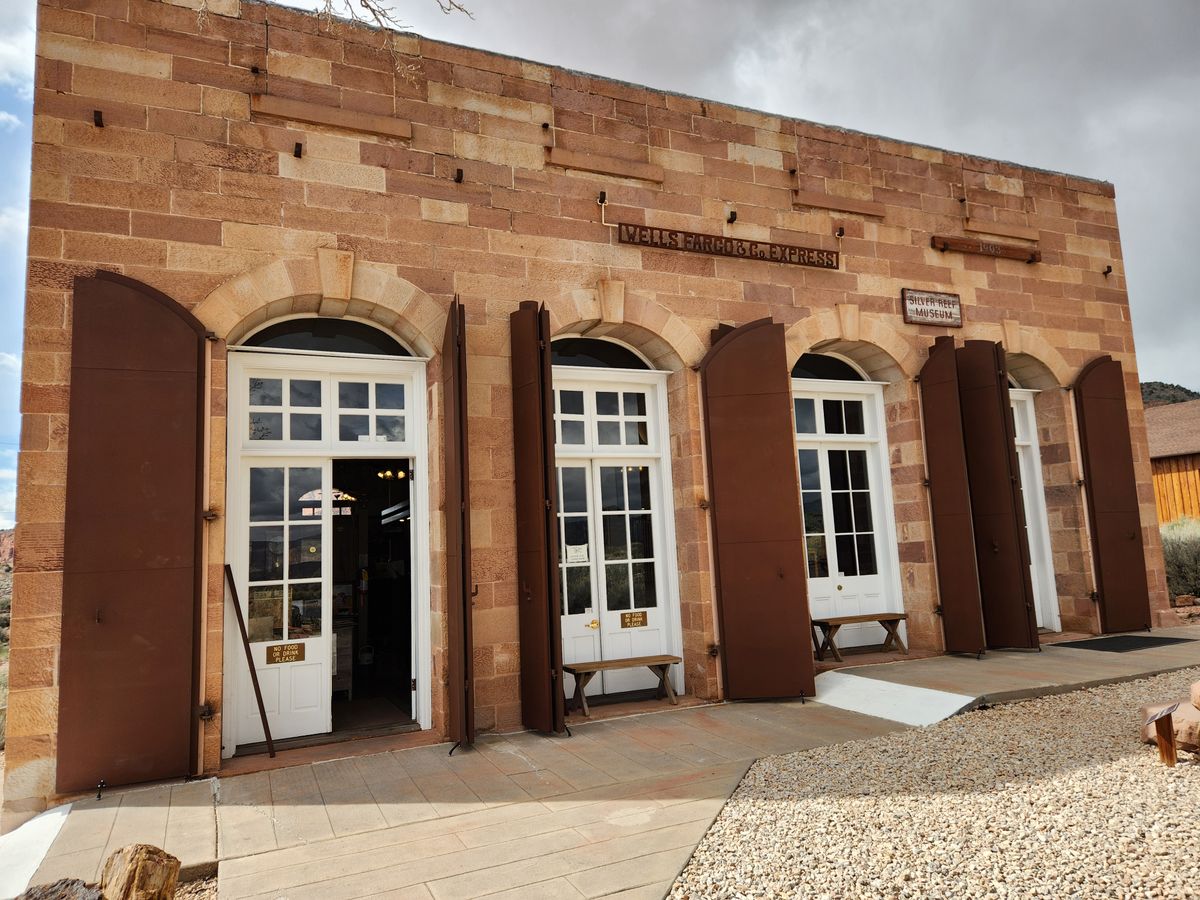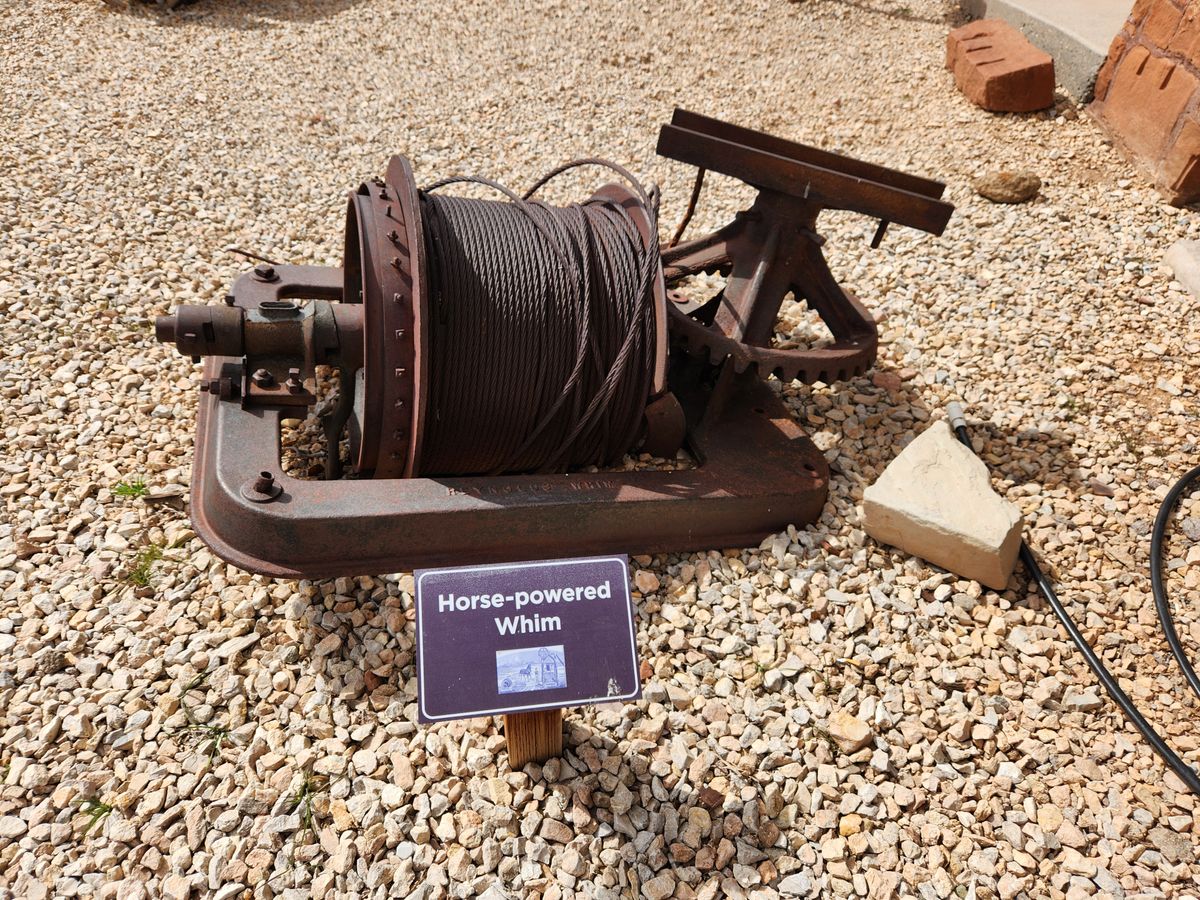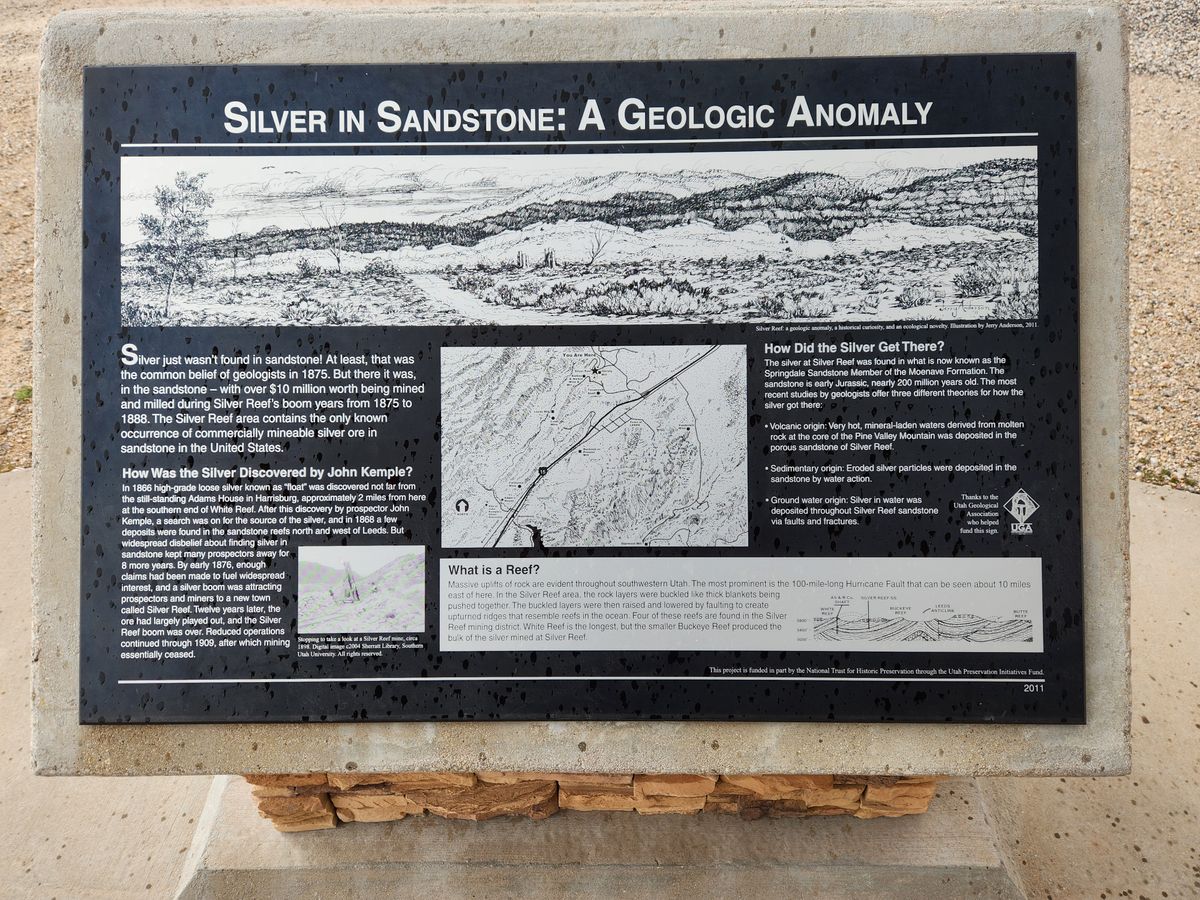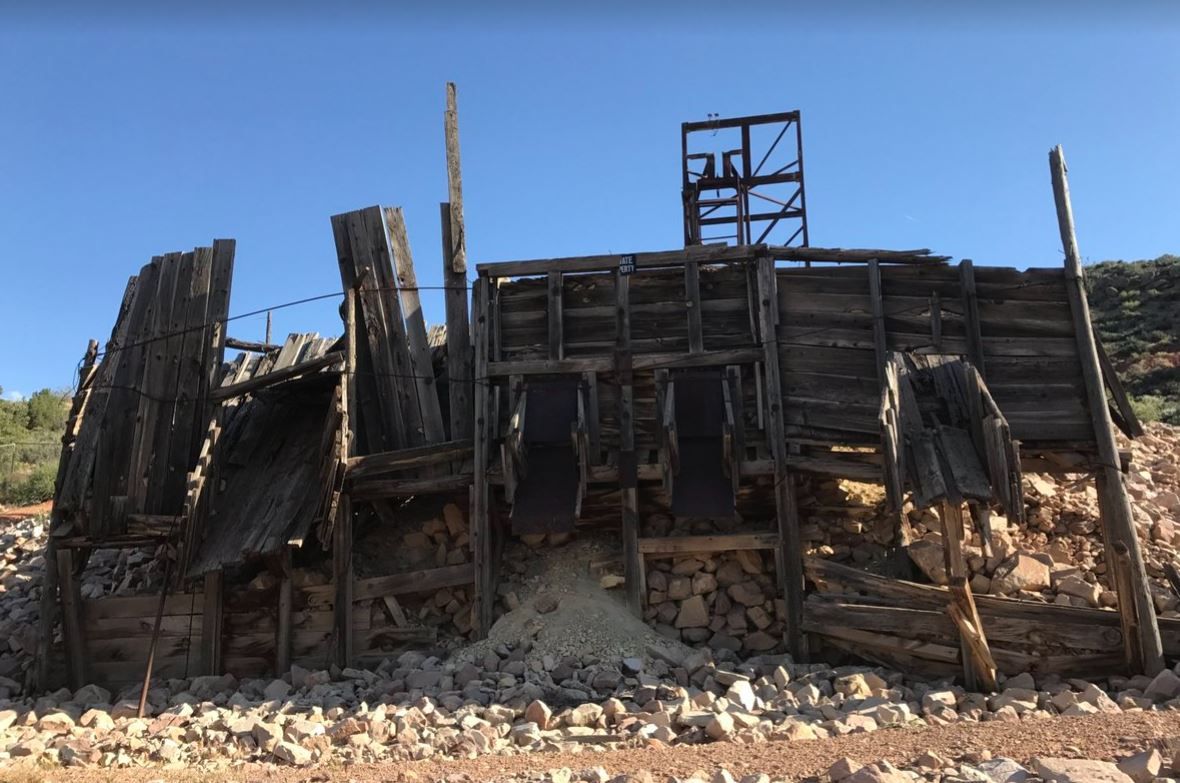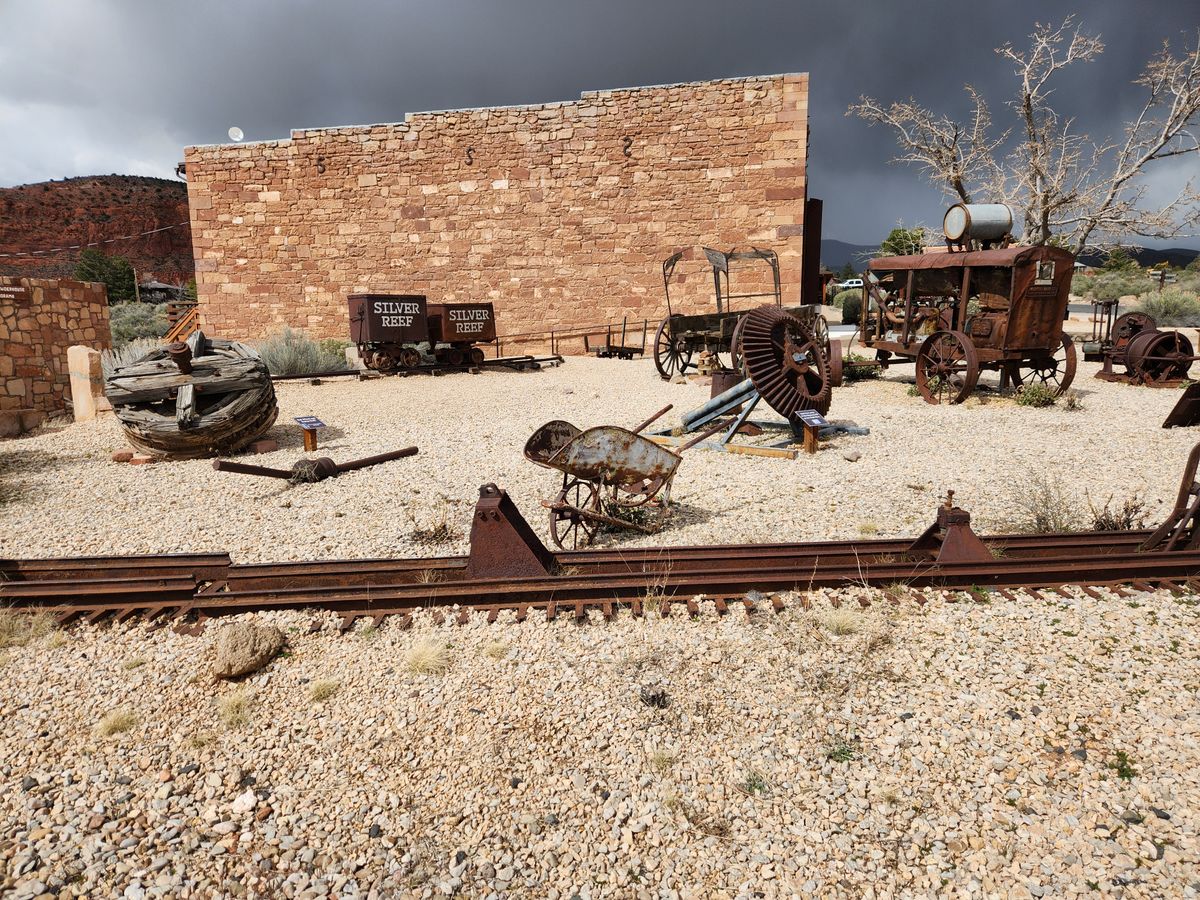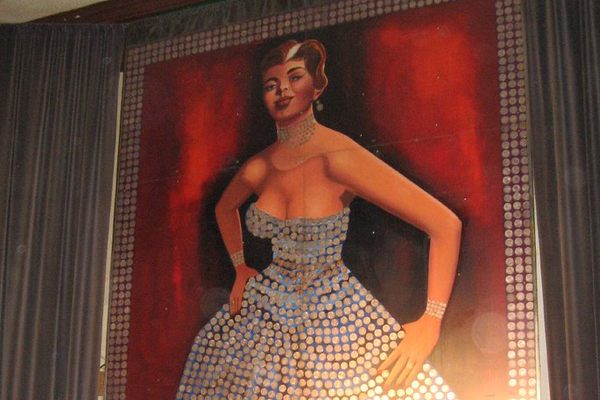About
By the mid-19th century prospectors and geologists had a good idea of what rock types were most likely to host precious metal deposits, and sandstone was not one of them. So when John Kemple reported silver values in sandstone from the Silver Reef area in the late 1860s, his discovery was greeted with disbelief and derision. Even Kemple was unsure of his findings. Not until the mid-1870s did a mining rush get underway, when people finally got around to checking the occurrence firsthand.
The silver mineralization is hosted in the Springdale Sandstone (called the Silver Reef Sandstone locally). It's a light-colored sandstone that's now considered the lowest part of the Kayenta Formation, which is otherwise one of the classic red bed units that accounts for the scenery in southern Utah. The metal values are localized by folding in the sandstone, and it's thought that solutions flowing through the sandstone precipitated the deposits, although the details remain in dispute.
What isn't in dispute is that bonanza-grade ores did occur, and the mining camp of Silver Reef sprang up to exploit them. By around 1880 four mills were running in Silver Reef, and the camp's population was probably around 1500. It didn't last, however: by 1888 the camp was in decline, due to falling silver prices, increased mining expenses due to the greater depths of excavation, and decreasing ore grade. Although desultory activity continued into the 20th century, Silver Reef's glory days were over.
Related Tags
Know Before You Go
The centerpiece of the old town site is the old Wells Fargo building, which now holds an extensive museum on the history of the area, as well as a large collection of mining equipment and artifacts. It is highly recommended to start your tour here--check the website for current hours and admission prices. Ruins also occur in the immediate area and stretch off to the south. Please stay off the ruins; take only pictures and leave only footprints.
To get there, take Utah State Route 9 east from Interstate 15 and go 0.8 miles to a left turn onto old US-91. This highway parallels I-15 back to the north, passing through lots of contemporary development. Follow old 91 9.4 miles, where it becomes Main Street through the village of Leeds. Near the north end of Leeds (at about 37.24342 N, 113.35244 W) turn left on Silver Reef Road and follow it 1.4 miles to the museum. This road immediately passes back under I-15.
Silver Reef has an exceptionally scenic setting among the red-rock cliffs, and the general area is now participating in the burgeoning development in southern Utah. One result is that a high-end residential area has grown up in the immediate vicinity, particularly to the north and east. Please respect private property.
Published
July 4, 2024


































